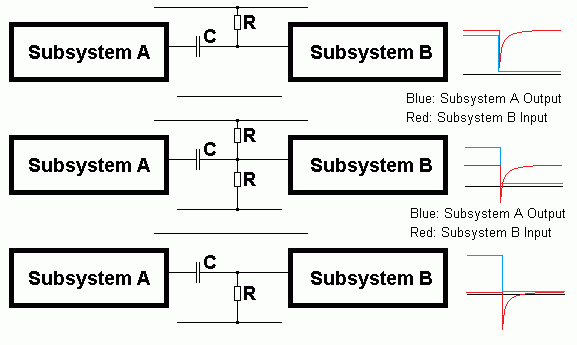

Interfacing |
|
To gain access to revision questions, please sign up and log in.
Interfacing transfers a signal from one subsystem to another.
Interfacing techniques include ...
This applies to most logic gates which are designed to be directly connected.

These pass A.C. signals (audio or radio) from one subsystem to the next while blocking D.C. potentials.

These boost the available current or power and have minimal effect on the voltage.






This is an RC timing circuit which copies the input pulse to the output but then quickly reverts back to its original state; high, middling or low in the three diagrams below.
The middle version of this circuit is useful if you need an op-amp to trigger a 555 monostable.

This is an RC timing circuit which smooths a rapidly varying voltage to its average.

This provides a DC Voltage equal to the peak AC input. This DC level dies away slowly depending on the values of R and C.

A potentiometer is used as a voltage divider. The slider can be moved from 0% to 100% of the signal voltage. One or two coupling capacitors might also be needed.

|
|
This circuit converts the square waves from a source like an astable into very short fixed length trigger pulses.
|
reviseOmatic V3 Contacts, ©, Cookies, Data Protection and Disclaimers Hosted at linode.com, London